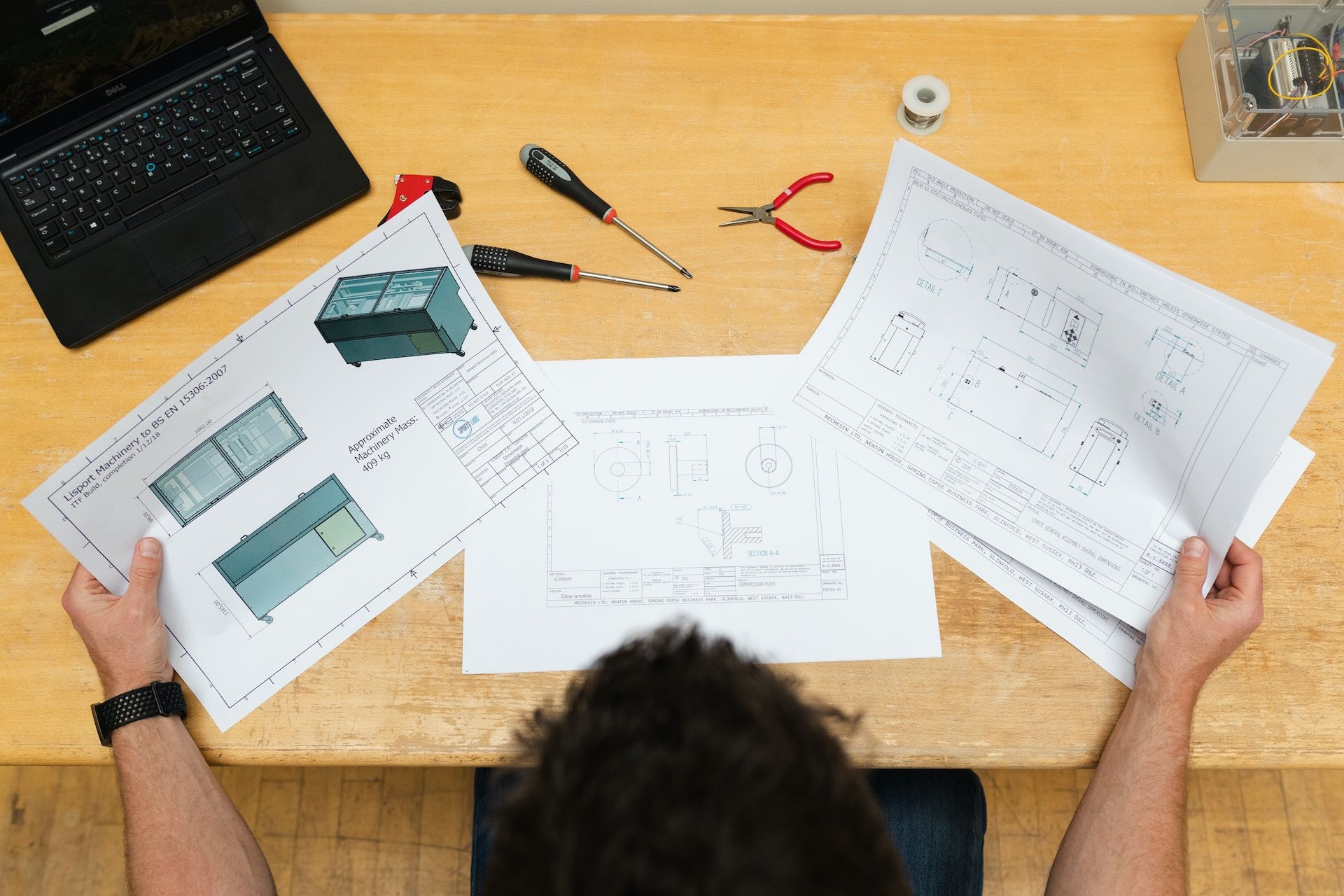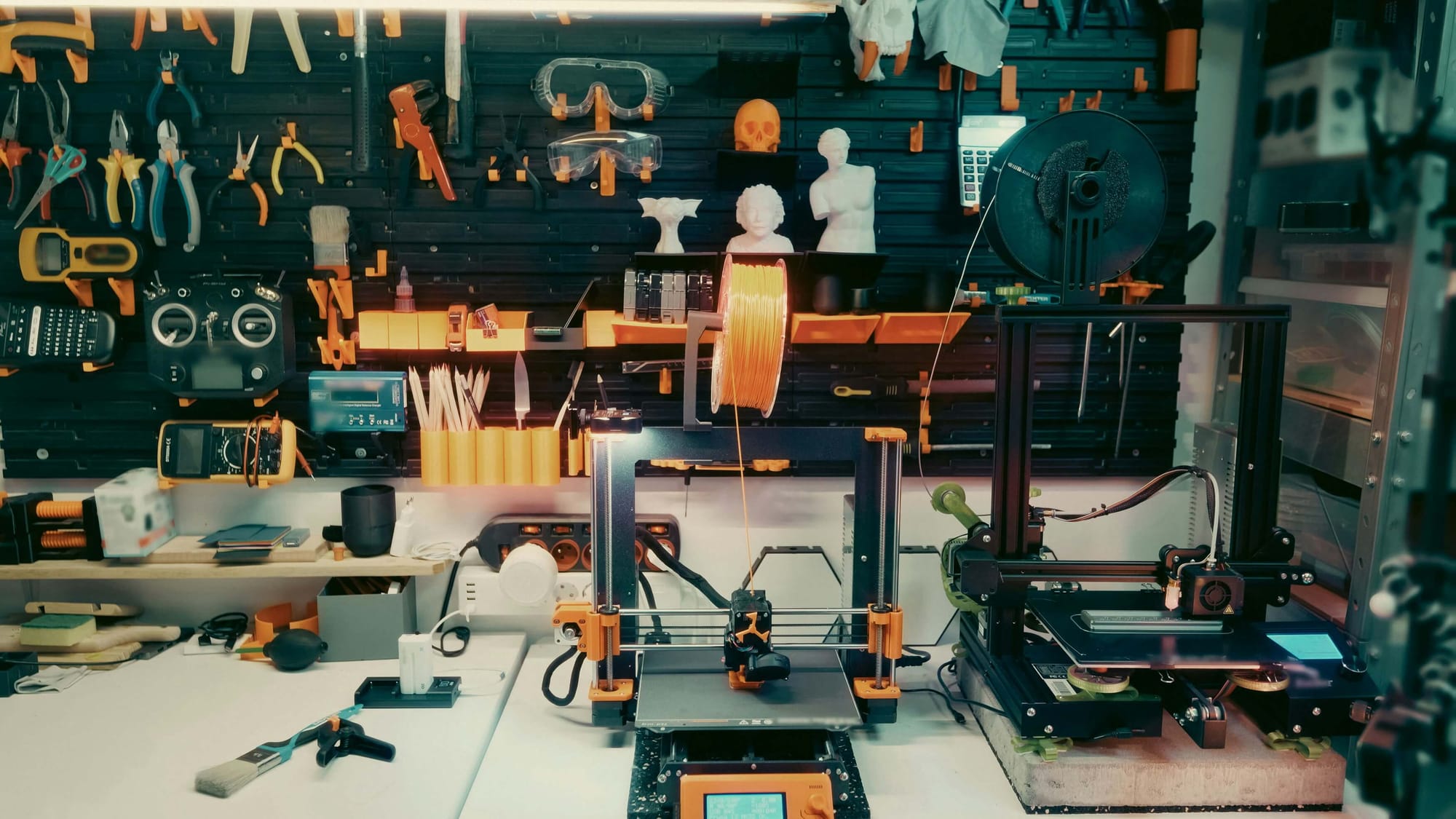According to a report by the Ellen MacArthur Foundation, the global furniture industry is responsible for the emission of around 1.5 billion tonnes of CO2 annually. Source: Ellen MacArthur Foundation.
The World Bank estimates that by 2050, the world's urban population will double, which will increase the demand for furniture and put further pressure on natural resources. Source: World Bank.

The United Nations Industrial Development Organization (UNIDO) estimates that global furniture production will increase by 22% from 2018 to 2023, reaching a total value of $750 billion. Source: UNIDO.
A study by the World Wildlife Fund (WWF) found that the furniture sector is responsible for 70% of the global demand for tropical wood, contributing to deforestation and biodiversity loss. Source: World Wildlife Fund.
Furniture manufacturing is an important industry that provides essential products for homes, offices, and public spaces. However, the industry is also faced with several critical issues and challenges that have significant environmental, social, and economic impacts.
These challenges include the depletion of natural resources, the emission of greenhouse gases, the generation of waste, and the use of unethical labor practices.
Additionally, the increasing demand for furniture due to urbanization and population growth has put further pressure on the industry to address these challenges.
This article will help you understand the critical issues and challenges of furniture manufacturing by covering the following topics:
- Furniture Manufacturing: Critical Issues and Challenges
- Strategies for Combating Critical Issues and Challenges of Furniture Manufacturing
- What are Some of the Most Promising Innovations that will Help Combat Critical Issues and Challenges of Furniture Manufacturing?
- FAQs related to Critical Issues and Challenges of Furniture Manufacturing
- How can Deskera Help You with Furniture Manufacturing?
- Key Takeaways
- Related Articles
Furniture Manufacturing: Critical Issues and Challenges
Furniture manufacturing is an industry that has been around for centuries and is an important part of the global economy. However, like any other industry, it faces a range of critical issues and challenges that need to be addressed in order to remain competitive and sustainable.
Here are some of the most pressing issues and challenges facing the furniture manufacturing industry today:
Sustainability
Sustainability is a critical issue and challenge of furniture manufacturing that is increasingly important in today's world. The furniture manufacturing industry is a significant contributor to environmental degradation and resource depletion, with the use of non-renewable materials and energy-intensive production processes.
To address this challenge, furniture manufacturing companies need to adopt sustainable practices throughout their supply chain, from the sourcing of raw materials to the disposal of end-of-life products. This includes using sustainable materials, such as certified wood and recycled materials, and minimizing waste through efficient production processes.
Furniture manufacturing companies can also adopt circular economy principles, where they design products that can be easily disassembled and recycled or repurposed for other uses, reducing the need for new resources and minimizing waste.
Furthermore, companies can reduce their carbon footprint by investing in renewable energy sources, such as solar or wind power, and by optimizing their logistics and transportation to reduce emissions.
Sustainability is not only important for the environment, but it is also a key driver of customer demand. Consumers are increasingly aware of the environmental impact of their purchasing decisions and are willing to pay a premium for sustainably produced furniture. Therefore, furniture manufacturing companies that prioritize sustainability can gain a competitive advantage and appeal to eco-conscious consumers.
In summary, sustainability is a critical issue and challenge of furniture manufacturing that must be addressed to ensure the long-term success and sustainability of the industry.
By adopting sustainable practices, companies can reduce their environmental impact, meet customer demand and therefore ensure customer loyalty, and gain a competitive advantage in the marketplace.
Supply Chain Management
Supply chain management is another critical issue and challenge of furniture manufacturing. Effective supply chain management is essential for the success of furniture manufacturing companies, as it directly impacts production efficiency, product quality, and customer satisfaction.
Furniture manufacturing companies need to manage their suppliers and vendors effectively to ensure the timely delivery of raw materials and components. This includes selecting reliable suppliers, negotiating favorable terms, and monitoring supplier performance to ensure compliance with quality standards and delivery schedules.
In addition, companies need to manage inventory levels effectively to balance production capacity and customer demand, minimizing the risk of stockouts or excess inventory. They also need to optimize logistics and transportation to ensure the timely delivery of finished products to their customers.
However, supply chain management can be complex, with multiple suppliers and vendors involved in the production process. Furniture manufacturing companies need to invest in digital technologies, such as supply chain management software, to improve visibility and coordination across the supply chain.
Moreover, supply chain disruptions can have a significant impact on production and customer satisfaction. Natural disasters, political instability, and global pandemics are just a few examples of potential disruptions that can impact the furniture manufacturing industry.
Companies need to develop contingency plans and risk management strategies to mitigate the impact of these disruptions and ensure the continuity of operations.
In summary, supply chain management is a critical issue and challenge of furniture manufacturing that requires effective management and coordination across the entire supply chain.
By investing in digital technologies, risk management strategies, and contingency plans, companies can improve production efficiency, product quality, and customer satisfaction and position themselves for long-term success.
Labor Shortage
Labor shortage is another critical issue and challenge of furniture manufacturing that is currently affecting the industry. Many furniture manufacturing companies are struggling to find and retain skilled workers, which can lead to production delays and reduced productivity.
There are several reasons for the labor shortage in the furniture manufacturing industry. One reason is the aging workforce, with many skilled workers retiring and not enough new workers entering the industry. Additionally, there is a lack of interest in manufacturing jobs among younger generations, who may prefer jobs in other industries.
To address this challenge, furniture manufacturing companies need to invest in training and development programs to attract and retain skilled workers. This includes offering apprenticeships, internships, and other training programs to provide workers with the skills and knowledge needed to succeed in the industry. Companies can also partner with technical schools and colleges to recruit and train new workers.
Furthermore, companies need to create a positive work environment that values and rewards skilled workers. This includes offering competitive wages, benefits, and opportunities for career growth and advancement. By creating a positive work culture, companies can attract and retain skilled workers and build a strong, dedicated workforce.
Moreover, companies can also leverage technology, such as automation and robotics, to augment their workforce and improve production efficiency. This can help to reduce reliance on manual labor and allow workers to focus on more complex tasks that require human skills and judgment.
In summary, labor shortage is a critical issue and challenge of furniture manufacturing that requires companies to invest in training and development programs, create a positive work environment, and leverage technology to augment their workforce. By addressing this challenge, companies can attract and retain skilled workers, improve production efficiency, and position themselves for long-term success.
Global Competition
Global competition is another critical issue and challenge of furniture manufacturing that is becoming increasingly important. The furniture manufacturing industry is a highly competitive and globalized market, with companies competing for customers worldwide.
To address this challenge, furniture manufacturing companies need to differentiate themselves by offering unique products and services that meet the needs of customers. This includes investing in research and development to create innovative designs, using high-quality materials, and providing excellent customer service.
Moreover, companies need to adopt lean manufacturing principles to improve production efficiency and reduce costs. This includes optimizing production processes, eliminating waste, and minimizing lead times.
Furthermore, companies can also explore international markets to expand their customer base and increase sales. This requires a deep understanding of local market trends, customer preferences, and cultural differences.
However, global competition also poses significant challenges, such as price pressure and intellectual property theft. Companies need to develop effective pricing strategies that balance customer demand and profitability while also protecting their intellectual property and minimizing the risk of infringement.
In addition, companies need to invest in supply chain resilience to mitigate the impact of global disruptions, such as trade wars, natural disasters, and global pandemics.
In summary, global competition is a critical issue and challenge of furniture manufacturing that requires companies to differentiate themselves, adopt lean manufacturing principles, explore international markets, and invest in supply chain resilience.
By addressing this challenge, companies can compete effectively in a globalized market, improve profitability, and position themselves for long-term success.
Changing Consumer Preferences
Changing consumer preferences are another critical issue and challenge of furniture manufacturing. Consumer preferences are constantly evolving, and furniture manufacturers need to adapt to these changes to stay competitive and meet the demands of their customers.
One major trend in consumer preferences is a growing demand for sustainable and eco-friendly products. Consumers are increasingly aware of the environmental impact of their purchasing decisions and are looking for products that are made using sustainable materials and production methods.
Furniture manufacturers need to adapt to this trend by investing in sustainable materials and production processes and by promoting their eco-friendly products to consumers.
Another trend is a shift towards online shopping and the use of e-commerce platforms. Consumers are increasingly using online channels to purchase furniture, and manufacturers need to adapt to this trend by developing robust e-commerce platforms and offering online purchasing options.
This includes developing a user-friendly website, offering online customer service and support, and optimizing the delivery and logistics process for online orders.
Additionally, there is a growing demand for customized and personalized furniture products. Consumers are looking for furniture that reflects their unique style and preferences, and manufacturers need to adapt to this trend by offering customized and personalized options. This includes offering a wide range of design options, providing customization tools on their website, and offering personalized customer service.
Furthermore, changing consumer preferences also impact the design and aesthetics of furniture products. Manufacturers need to stay up-to-date with the latest design trends and preferences and adapt their product offerings accordingly. This includes investing in research and development, collaborating with designers and architects, and attending industry events to stay informed on the latest trends.
In summary, changing consumer preferences are a critical issue and challenge of furniture manufacturing that requires companies to adapt to evolving trends and demands.
By investing in sustainable materials, developing robust e-commerce platforms, offering customized and personalized options, and staying up-to-date with the latest design trends, companies can meet the demands of their customers and position themselves for long-term success.
Technology Adoption
Technology adoption is another critical issue and challenge of furniture manufacturing. The rapid advancement of technology is changing the way furniture is designed, produced, and sold. Companies that fail to adopt new technologies risk falling behind their competitors and losing market share.
One major trend in technology adoption in furniture manufacturing is the use of computer-aided design (CAD) software to design and visualize furniture products. CAD software allows manufacturers to create detailed 3D models of furniture products and make design changes quickly and easily. This can lead to faster product development, improved design quality, and reduced production costs.
Another trend is the use of automation and robotics to improve production efficiency and quality. Automation and robotics can perform repetitive tasks, such as sanding and painting, with greater accuracy and consistency than human workers. This can lead to improved production efficiency, reduced labor costs, and improved quality control.
Moreover, there is a growing use of augmented reality (AR) and virtual reality (VR) in furniture manufacturing. AR and VR can be used to visualize furniture products in a virtual environment, allowing customers to see how the products will look in their homes before making a purchase. This can lead to improved customer experience, increased sales, and reduced return rates.
Additionally, companies are also adopting the Internet of Things (IoT) technology to create smart furniture products that can connect to the internet and be controlled remotely. Smart furniture products can include features such as built-in sensors, automated lighting, and temperature control. This can lead to improved functionality, increased customer engagement, and new revenue streams.
However, the adoption of new technologies also poses challenges, such as the need for new skill sets, the cost of investment, and the risk of technology obsolescence. Companies need to invest in training and development programs to ensure that their workforce has the necessary skills to operate new technologies. Moreover, companies need to develop a long-term technology adoption strategy that balances the costs of investment and the potential benefits of new technologies.
In summary, technology adoption is a critical issue and challenge of furniture manufacturing that requires companies to stay up-to-date with the latest technological advancements, invest in new technologies, and develop a long-term technology adoption strategy.
By adopting new technologies, companies can improve production efficiency, quality, and customer experience and position themselves for long-term success.
Logistics and Transportation
Logistics and transportation are critical issues and challenges in furniture manufacturing. The furniture industry relies heavily on the efficient movement of raw materials, finished products, and supplies between manufacturing plants, warehouses, and retail outlets. Inefficient logistics and transportation can lead to delays, increased costs, and decreased customer satisfaction.
One major challenge in logistics and transportation for furniture manufacturers is the size and weight of furniture products. Furniture products are often large, bulky, and heavy, which makes them difficult to transport and store. Companies need to invest in specialized transportation equipment, such as trucks with hydraulic lifts and trailers with extra space, to transport these products safely and efficiently.
Moreover, furniture manufacturers need to manage their supply chain effectively to ensure that raw materials, components, and finished products are delivered on time and in the right quantities. This requires close collaboration with suppliers, effective inventory management, and accurate demand forecasting.
Another challenge is the management of reverse logistics, which involves the collection and disposal of damaged, defective, or unwanted furniture products. Reverse logistics can be costly and time-consuming, and companies need to develop efficient processes for collecting, repairing, and disposing of these products.
Additionally, furniture manufacturers need to manage their logistics and transportation operations sustainably. This includes reducing emissions, minimizing waste, and using eco-friendly transportation methods.
Companies need to invest in technologies that promote sustainable logistics and transportation, such as hybrid and electric vehicles, and optimize their delivery routes to minimize fuel consumption and reduce emissions.
In summary, logistics and transportation are critical issues and challenges of furniture manufacturing that require companies to invest in specialized transportation equipment, manage their supply chain effectively, manage reverse logistics efficiently, and promote sustainable logistics and transportation methods. By effectively managing logistics and transportation, companies can improve their efficiency, reduce costs, and improve customer satisfaction.
Strategies for Combating Critical Issues and Challenges of Furniture Manufacturing
To combat the critical issues and challenges of furniture manufacturing, companies can implement various strategies. Here are some strategies for addressing the critical issues and challenges mentioned earlier:
- Sustainability: Companies can adopt sustainable practices, such as using eco-friendly materials, reducing waste, and promoting recycling. They can also implement energy-efficient technologies and invest in renewable energy sources to reduce their carbon footprint.
- Supply Chain Management: Companies can improve their supply chain management by using data analytics to optimize their inventory and delivery schedules. They can also build strong relationships with their suppliers and implement effective quality control measures to ensure the quality of their raw materials and finished products.
- Labor Shortage: Companies can attract and retain skilled workers by offering competitive wages, benefits, and training programs. They can also invest in automation technologies to reduce their dependence on human labor and improve efficiency.
- Global Competition: Companies can differentiate themselves from their competitors by offering unique designs, high-quality products, and excellent customer service. They can also expand their product offerings and enter new markets to increase their market share.
- Changing Consumer Preferences: Companies can adapt to changing consumer preferences by conducting market research and developing new products that meet the needs and preferences of their target customers. They can also leverage digital technologies, such as social media and e-commerce, to reach new customers and increase sales.
- Technology Adoption: Companies can adopt new technologies by investing in research and development, partnering with technology vendors, and implementing training programs for their employees. They can also develop a long-term technology adoption strategy that balances the costs and benefits of new technologies.
- Logistics and Transportation: Companies can optimize their logistics and transportation operations by using data analytics to plan their delivery routes and improve their inventory management. They can also invest in specialized transportation equipment, such as trucks with hydraulic lifts and trailers with extra space, to transport large and bulky furniture products efficiently.
In summary, to combat the critical issues and challenges of furniture manufacturing, companies need to adopt a multi-faceted approach that addresses each challenge with the appropriate strategy.
By implementing these strategies, companies can improve their efficiency, reduce costs, and increase customer satisfaction, ultimately positioning themselves for long-term success.
What are Some of the Most Promising Innovations that will Help Combat Critical Issues and Challenges of Furniture Manufacturing?
Furniture manufacturing faces several critical challenges, including sustainability, waste reduction, and supply chain management. However, there are several promising innovations that can help address these challenges. Here are some examples:
- Sustainable Materials: The use of sustainable materials like bamboo, recycled plastic, and reclaimed wood can significantly reduce the environmental impact of furniture manufacturing. These materials are renewable, biodegradable, and have a lower carbon footprint.
- 3D Printing: 3D printing technology can revolutionize the furniture manufacturing industry by allowing for the creation of complex and customizable designs with minimal waste. This technology can also reduce the need for transportation and logistics since the furniture can be printed on-site.
- Circular Economy: The circular economy model can help reduce waste in the furniture manufacturing industry by promoting the reuse and recycling of materials. This approach can also create new business opportunities and revenue streams.
- Smart Manufacturing: Smart manufacturing technologies like automation, robotics, and data analytics can improve efficiency and reduce waste in the furniture manufacturing process. This can help reduce costs, increase productivity, and improve product quality.
- Blockchain Technology: Blockchain technology can be used to improve supply chain management and traceability, reducing the risk of fraud and ensuring the sustainability and ethical sourcing of materials.
Overall, these innovative technologies and approaches can help address critical issues in furniture manufacturing, making it more sustainable, efficient, and ethical.
FAQs related to Critical Issues and Challenges of Furniture Manufacturing
- What is the impact of furniture manufacturing on the environment?
Furniture manufacturing has a significant impact on the environment due to the use of non-renewable resources, the emission of greenhouse gases during production and transportation, and the generation of waste.
- How can furniture manufacturing reduce its environmental impact?
Furniture manufacturing can reduce its environmental impact by using sustainable materials, implementing circular economy principles, and adopting smart manufacturing technologies.
- What is the circular economy model, and how can it be applied to furniture manufacturing?
The circular economy model is an economic system that promotes the reuse and recycling of materials to reduce waste and create new business opportunities. It can be applied to furniture manufacturing by promoting the reuse and recycling of materials and creating new revenue streams from the collection and processing of waste.
- What are some sustainable materials that can be used in furniture manufacturing?
Sustainable materials that can be used in furniture manufacturing include bamboo, recycled plastic, reclaimed wood, and biodegradable plastics.
- How can 3D printing technology benefit furniture manufacturing?
3D printing technology can benefit furniture manufacturing by reducing waste, allowing for the creation of complex and customizable designs, and reducing transportation and logistics costs.
- What are the benefits of smart manufacturing technologies in furniture manufacturing?
Smart manufacturing technologies can improve efficiency, reduce waste, increase productivity, and improve product quality in furniture manufacturing.
- What are some of the ethical challenges facing furniture manufacturing?
Ethical challenges facing furniture manufacturing include labor exploitation, unsafe working conditions, and unethical sourcing of materials.
- How can blockchain technology help address ethical challenges in furniture manufacturing?
Blockchain technology can improve supply chain management and traceability, reducing the risk of fraud and ensuring the sustainability and ethical sourcing of materials.
- What role do regulations play in furniture manufacturing?
Regulations play a crucial role in ensuring that furniture manufacturing is conducted in a safe and environmentally responsible manner, protecting both workers and the environment.
- How can consumers make more sustainable choices when purchasing furniture?
Consumers can make more sustainable choices when purchasing furniture by choosing products made from sustainable materials, supporting companies that prioritize sustainability, and buying second-hand or vintage furniture.
How can Deskera Help You with Furniture Manufacturing?
Deskera is a cloud-based software solution that offers a range of features to help streamline and optimize the furniture manufacturing process. Here are some ways Deskera MRP can help you with furniture manufacturing:
- Inventory management: Deskera can help you manage your inventory levels and track the movement of raw materials and finished goods in real time.
- Production planning: With Deskera, you can plan and schedule your production process, track progress, and monitor resource utilization to ensure efficient production.
- Quality control: Deskera offers tools to help you manage quality control throughout the manufacturing process, from design to finishing, to ensure that your products meet the required standards.
- Sales and distribution: Deskera can help you manage your sales orders, track customer orders, and manage your distribution channels, allowing you to manage your sales process more efficiently.
- Financial management: With Deskera, you can manage your financial transactions, track expenses, and generate financial reports, giving you greater visibility into your financial performance.
- Business intelligence: Deskera provides advanced analytics and reporting capabilities, allowing you to gain insights into your business performance and make data-driven decisions.
Key Takeaways
In conclusion, the critical issues and challenges facing the furniture manufacturing industry are complex and multi-faceted, including but not limited to the following:
- Sustainability: With increasing concern about the environment, furniture manufacturing companies are under pressure to use sustainable materials and manufacturing practices. They need to adopt eco-friendly technologies that reduce the use of resources and minimize waste.
- Supply chain management: Effective supply chain management is crucial for the success of furniture manufacturing companies. These companies need to manage their suppliers and vendors effectively to ensure the timely delivery of raw materials and components.
- Labor shortage: In many parts of the world, there is a shortage of skilled labor in the furniture manufacturing industry. This can lead to delays in production and reduced productivity. Companies need to invest in training and development programs to attract and retain skilled workers.
- Global competition: The furniture manufacturing industry is highly competitive, with companies from around the world vying for market share. To remain competitive, companies need to constantly innovate and improve their products and processes.
- Changing consumer preferences: Consumer preferences are constantly changing, and furniture manufacturing companies need to keep up with these changes to stay relevant. They need to invest in research and development to understand the latest trends and design products that meet the needs and preferences of their customers.
- Technology adoption: Technology is transforming the furniture manufacturing industry with the use of automation, artificial intelligence, and robotics. Companies that do not adopt these technologies risk falling behind their competitors.
- Logistics and transportation: Furniture manufacturing companies need to manage logistics and transportation effectively to ensure the timely delivery of finished products to their customers. This requires careful planning and coordination to minimize delays and ensure customer satisfaction.
However, by implementing sustainable practices, adopting circular economy principles, and leveraging innovative technologies, the industry has the potential to reduce its environmental impact and improve working conditions for its employees.
Additionally, consumers can play a role in promoting sustainability in the industry by making conscious purchasing decisions, supporting companies that prioritize sustainability, and choosing second-hand or vintage furniture.
The furniture manufacturing industry must continue to prioritize sustainability and ethical practices to meet the growing demand for furniture while minimizing its impact on the environment and society.
Ultimately, by working together, the industry and consumers can create a more sustainable and responsible future for furniture manufacturing.
By using Deskera's comprehensive suite of software tools, furniture manufacturers can streamline their operations, improve efficiency, and reduce costs, resulting in better business performance and increased customer satisfaction.
Related Articles













